This patient-friendly overview on brain tumours, or brain cancer, covers symptoms, causes and treatments from chemotherapy, radiotherapy and surgery, to alternative and complementary therapies such as Proton Beam Therapy, virotherapy, Hyperbaric Oxygen, the ketogenic diet, the Banerji Protocol, the Optune system and more; it will give you options and we believe help you to increase your personal odds of survival.
It has been compiled by Chris Woollams from worldwide research and expert sources*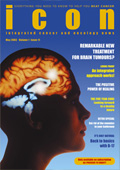
Brain cancer - increasing your personal odds of survival
This is the ’Signature page’ in the whole website because in early 2001, my daughter Catherine was diagnosed with a grade IV brain tumour, a glioblastoma (GBM). She was an extremely bright and talented 22 year old. Catherine was given 5 to 6 months to live at the most. ’We’ll give her a good summer’ was the quote from the oncologist. Indeed, St Thomas’ hospital in London had never had anyone live longer than 18 months with a glioma.
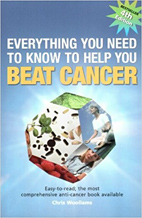
Catherine survived nearly 8 times longer than predicted. I say ’survived’ but this word probably gives you the wrong impression. Catherine skied, dived, travelled and partied right to the end. She was 26 when she died in November 2004. In 2003, several Doctors at St. Thomas’ Hospital, London encouraged me to write down my findings - and so ’Everything you need to know to help you beat cancer’ came to be - it has been the UK’s best selling book on cancer for fourteen years or so (and you cannot even buy it through the shops, only direct from the wholesaler - Click Here).
I well remember going to see her oncologist one day. He was with a fellow Doctor. I was asked if I had any questions. "Yes, I don’t understand one thing. Why after you have given her an operation, do you feed her ice cream and Ribena in Hospital?" Guessing what I was driving at, he turned to his friend and laughed, "Chris thinks that if you stopped glycolysis, you’d stop the cancer!"
In 2016, my ex-wife bumped into the oncologist. Excitedly, he told her, "We have people living almost as long as Catherine now." Expecting the answer to be about a drug, she asked, "How?" to which the oncologist said, "We’ve got everybody on the Atkins Diet."
So there it is - Integrative Medicine at work.
Oh, you remember the Atkins Diet don’t you? It involves eating absolutely no carbohydrates. Eat meat; drink water. That’ll stop glycolysis then!
Complementary and Integrative Medicine for brain cancer
It is important to make a key point up front. In 2001, everywhere Catherine looked on the Internet it said she was dead. The drugs did not cure; there was no hope. It’s not what a 22 year old needs to read!!
Against that background we set out looking for things that research showed could help her survive longer. And we found them. From sunshine and vitamin D to chokeberry, fish oils, curcumin, echinacea and other natural compounds - indeed we were genuinely surprised how much good research could be found on the subject. And so we surrounded her orthodox medicine with a good, low-glucose diet, nuts and seeds, fish oils, curcumin and other supplements to boost her immune system, plus yeast killers (she’d had antibiotics most years for tonsillitis) exercise, yoga, and natural anti-estrogens and anti-inflammatory compounds and foods.
’Complementary and Integrative Medicine’ is the philosophy of CANCERactive. We’ve championed it since day 1.
We are not alone in this view - in 2017, The American Cancer Society published the results of a seven year study to establish whether or not their diet and exercise guidelines were effective. Everybody in the study was stage 3, and had had surgery and chemo for colorectal cancer - those who adhered most closely to the diet and exercise guidelines had 31 per cent less recurrence and 42 per cent less death than the people who adhered least, during the seven years.
I know a number of people who have successfully taken a Grade I or II brain tumour and stabilised the condition completely. I do know a number of people, although it is fewer, who have beaten a grade 3 or 4 brain cancer. Astrocytomas and gliomas (GBM) are where the cancer has started to spread throughout the brain, rather like diagnosing a breast cancer when it has metastasised to the bones and lungs. From what I have read, it is not impossible to beat, but the odds are stacked against you. I was recently contacted by a lady with breast cancer. How did you hear about us? My friend XX speaks very highly of you; you helped her with her GBM 15 years ago!
One of my favourite quotes is "I believe you can be cured. The cancer may be in remission, but it can be in remission permanently". This was uttered by Dr. Henry Friedman, one of America’s top oncologists. And he specialises in brain tumours at Preston Robert Tisch Brain Tumor Center - Duke University.
Where people do beat a Grade 3 or 4 brain tumour, it is nearly always done by thoroughness and determination. But this needs to be said up front:
* Do I know a treatment protocol that cures all gliomas? No.
* Do I know a treatment protocol that has been used by someone to beat a glioma? Yes.
Brain cancer, drugs and radiotherapy
But, there’s a new dilemma for someone trying to build a complementary program around the doctor’s clever medicine. It’s not that clever.
Brain tumors are too serious for me to imply that anyone should ignore their oncologist, his treatments or his teams’ advice. They will offer standard practice of surgery and radiotherapy, then drugs such as Temozolomide (TMZ) or Avastin.
Temozolomide - TMZ is a form of chemotherapy called an alkylating agent. But it only works for 20% of GBM patients. To quote Web MD: methylationtemozolomide.
Unfortunately, most GBM tumour cells can prevent or correct this attack. A factor called AGT is involved and people can be tested in advance to see whether or not TMZ will actually help them.
Can you make TMZ work better? Yes.
There is research suggesting metformin and/or berberine make TMZ work better.
The Optune System makes it work better
And EGCG (from green tea), chloroquine (see below), and honokiol can also extend the 20% figure and also make the drug work better by weakening the ability of AGT.
Avastin - there is evidence for avastin (Bevacizumab) with several cancers but according to ’The UK Brain Tumour Charity’, the ’evidence for its effectiveness in treating brain tumour is not clear yet’. However Avastin is used for brain cancer in the USA. Even in America the survival increment for Avastin is so poor, researchers are looking for enhancement - at Northwestern Memorial Hospital, Dr. Orin Bloch and his team have been making significant strides with ’personalised viruses’ for GBM patients.
So it is with a heavy heart that I pass on the following:
Unfortunately, chemotherapy and radiotherapy even seem to make matters worse.
TMZ actually increases plasma glucose, and as you will see, that's not too clever with a brain tumour. Radiotherapy seems to increase glutamine levels and radiation can make brain tumours more aggressive. Indeed there is research that shows that rather than have Temozolomide on its own, you’d be better off doing nothing.
Even the steroids that are used to reduce inflammation come with significant problems. Dexamethasone increases blood sugar levels and seems to reduce effectiveness of chemo and radiotherapy.
A review of the poor performance and dangers of radiotherapy, chemotherapy and even the steroids can be found HERE.
Building a personal program for brain cancer
But, let’s just stay with the plot for a while. What could you do to improve the performance of the oncologists’ orthodox medicine? Answer - lot’s of big things. Here’s a few for starters:
1. Diet
Let’s start with the Atkins diet quote above. All cells love glucose. Healthy cells are, however, flexible. If there’s no sugar around, they can switch to burning fats - it’s called ketosis. Cancer cells have a different energy production system. IT NEEDS GLUCOSE. It produces energy by glycolysis, a very inefficient energy generating system demanding lots of glucose. No surprise then that cancer cells have 14 times the number of insulin receptors over healthy cells.
Go to: 20 links between glucose and cancer
We know that fitting (seizures) and epilepsy in children can be controlled by cutting glucose from the diet. A charity called Mathew’s Friends are leaders in this area, using a Ketogenic diet, a medically recognized diet, which is an extreme form of the Rainbow Diet involving little or no carbohydrates, lots of ’good’ oil consumption and greatly reduced animal protein levels. Seven studies have now reported on the Ketogenic Diet or the Atkins Diet in reducing drug resistant adult seizures, as well. Of course, for many people the first sign of a brain tumour is a blackout, fainting, a fit or seizure.
Go to: "Would you like Chris Woollams to help build your Personal program?"
Much work has been done on the Ketogenic diet and brain cancer by people such as Thomas N. Seyfried, Professor of Biology at Boston College, who I spent several days with in 2018. A number of studies from Seyfried and others have confirmed that a Ketogenic Diet (a low carbohydrate, high fat diet) decreases blood glucose, elevates blood ketones and slows cancer progression in both animals and humans. Some 90% of the calories come from fat, 2% from carbs and 8% from protein, and we now know that this diet does not simply restrict glucose; ketone bodies can cause restrictive changes in the cancer cell.
Does it cure you? The $64,000 question. After a period of time, cancer cells starved of glucose can switch to glutamine as a reserve fuel. This is an amino acid found in animal protein, and converts in a two way process to glutamate in cancer cells. People with cancer should avoid glutamine- and glutamate-rich foods such as bone broth, too much animal protein or glutamine supplements.
Go to: The Ketogenic Diet
A number of people have used a Ketogenic Diet successfully with brain tumours - one person is Andrew Scarborough, who has a website (www.zerocarbzen.com) and a closed Facebook group called Beating Brain Cancer. He changed his diet to include low sugar fruits and vegetables, lots of heavy whipping cream, oil, nuts, cheese, coconut milk and avocados etc. However his Website is headed 'Eat meat, drink water". Er, that's an Atkins diet. And he goes on to say "lamb is your friend", so he is simply cutting all sugars. No problem. Lots of people think they are on a Keto Diet without understanding how really strict it is.
Another person who is 4 years on with no sign of his GBM is Pablo Kelley. We have interviewed Andrew and I have talked to Pablo. Pablo has an HD-1 mutation - he cannot burn glutamine. His cells can only burn glucose. A ketogenic diet is perfect for him.
If I had a brain tumour, I would most certainly use a sugar-free diet as part of my treatment program - a ketogenic diet, or an Atkins Diet; at a minimum, I’d use a colourful Mediterranean Diet as Catherine did, and underpin this with metformin and/or berberine.
2. Oxygen
Seyfried and others did not stop there. They went on to show that on top of a Ketogenic Diet, patients on low carb diets should employ Hyperbaric Oxygen Therapy (HBOT).
Cancer tumours protect themselves by forming a hypoxic pocket in the blood supply system - HBOT saturates tumours with oxygen and reduces the cancer promoting effects of hypoxia. The double act is even more effective: Using a Ketogenic Diet increases survival, and adding HBOT increases it further.
Go to: Hyperbaric Oxygen Therapy
There are, of course, other ways of increasing your oxygen. These include
* Light to moderate exercise for 45 minutes a day
* Green juice diets
* Supplements such as Alpha Lipoic Acid; dietary additions such as crushed flaxseed.
3. Supplements
There are a number of supplements clearly shown in research to be crucial to any cancer patient - like vitamin D, the sunshine vitamin, for example. Basically people with low vitamin D levels develop more cancer; if you have cancer and still have low vitamin D, you reduce survival time significantly. It’s crucial to get the dosage right; and drugs can cut plasma levels in half.
But there is research on other supplements, specifically with brain tumors - for example, fish oils, curcumin, chokeberry, echinacea, the B vitamins choline and inositol. For a definitive list, you should ..
Go to: Amy’s story on this website.
It’s the true account of air hostess Amy who was being treated at the same time as Catherine, but by world expert Dr. Henry Friedman at Duke’s Cancer Center in Carolina. She is alive sixteen years on, and has two children. She built an integrative programme of diet, supplements and exercise around Friedman’s Dendritic Cell Therapy, which to this day still has no Phase III clinical trials to support it.
While we have extensive research on what supplements help; Amy got the list 100% right. The story is a ’must-read’ and will show you what bioactive, natural compounds really can help according to research.
4. Enhancing the drug effect?
Above we told you how bad glucose can be for the brain, seizures and brain cancer. Well, metformin lowers blood sugar and, not surprisingly according to research, inhibits glioblastoma growth. But, it has also been shown to reduce glioblastoma resistance to Temozolomide. Metformin actually makes TMZ work better. It also reduces blood supplies after surgery. In other words, it enhances the action of orthodox medicine.
Berberine is a herb that also reduces blood sugar - it has been shown to increase glioma cell degradation, decrease tumour proliferation, and actually out-perform Temozolomide, although these studies are only in vitro. Berberine also, like metformin, seems capable of extending Temozolomide’s action beyond just 20% of people with brain tumours.
Mebendazole is a drug that kills parasitic worms. Increasingly it is being shown to have anti-glioblastoma (GBM) effects. It is a microtubule inhibitor just like the drug Vincristine (in the triple drug, PVC combination). But it is far better tolerated, better at crossing the Blood Brain Barrier (BBB) and can be used in higher doses.
Go to: Repurposing old drugs for new
The anti-malarial drug chloroquine has been shown to treat and even cure a young female GBM patient by the University of Colorado; two others showed huge improvements. It is particularly relevant in BRAF+ cancers.
Artemisinin is a herb that has multiple benefits against GBM. The herb and its analogs cross the BBB and research has argued for its use in GBM. It has been shown to knock out brain tumour cells, especially when bound to iron.
Professor Ben Williams is a UC San Diego Professor of psychology who developed a brain tumour - a glioblastoma, GBM - in 1995. He did his research, talked to medical colleagues and used a number of common ’repurposed’ drugs not ordinarily used with brain tumours - and has completely beaten the disease - it took him 18 months. He is now over 70 years of age. Orthodox oncologists will not be happy with his findings, but there is a film about him and he has support from a number of sources including the UK Brain Tumour Charity. Follow this link to our ’Living Proof’ article.
There are several top oncologists using repurposed drugs in London and there is a specialist clinic called Care Oncology in Harley Street, which is also run by oncologists and may well be worth talking to.
5. Dealing with pathogens and yeasts
As I said above, we were conscious that Catherine had a yeast infection anyway because of the many years of antibiotics for tonsillitis. Were did our best to get rid of the yeasts. However, an expensive blood test after about three and a half years, found she had yeasts in her brain (and yeasts will debilitate and reduce oxygen levels making matters worse) plus a mystery parasite. The doctors felt both were treatable but said it was all too late for Catherine.
Interestingly, in 2016, an American Scientist found Borrelia burgdorferi (the Lyme Disease parasite) in the brain of every one of five dead GBM patients. Two Personal Prescription patients of mine went to be tested in early 2017. Both were found to be positive. Neither had symptoms.
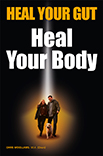
In this area of a Personal Prescription, I like brain tumour patients to be cautious - especially after all the drugs and antibiotics damaging their gut bacteria. I suggest common yeast killers such as oregano oil, pau d’arco and caprylic acid. Plus artemisinin treatment for pathogens and yeasts; and maybe even a full 8 week parasite kill.
Read more: Article ’Heal your Gut - Heal your Body’
’Alternative’ Brain Tumour Treatments
Yes, there are some - people ask about DCA, hydrazine sulphate, sodium bicarbonate, DMSO and more. Let’s have a look at some options.
* Intravenous Vitamin C (IVC): The controversy surrounding Linus Pauling and his claim that High dose, Intravenous Vitamin C could increase survival times and even cure a cancer is being resolved clearly in his favor by Ohio Medical School, who have now almost completed phase II of a proper 3 phase Clinical Trial with both Grade 4 Lung cancer and grade 4 brain cancer patients. So far so good. Clear increases in survival times; no side-effects. Need to quantify the data next.
* Cannabis: there are people using cannabis oil to treat brain tumours (and other cancers) as part of an Integrated Treatment Programme right now, and with some varying degree of success. It either seems to work, or it doesn’t - although it can simply be good for pain relief.
Go to: Cannabis.
Go to: Hemp vs Cannabis
* The Banerji Protocol: Father and son homeopaths in Calcutta have been treating brain tumours with Ruta and Calcarea Phosphorica (See HERE), (and HERE) and stood up over a decade ago presenting their successes at a US Cancer Conference. MD Anderson researchers worked on a clinical trial with them under the gaze of the FDA. And the trial apparently went well. In 44 patients there was no recurrence in 63.6%. It was covered on the MD Anderson website, but has since disappeared. Apparently Banerji will reply when contacted, as will Dr. Sen Pathak, Professor of Cell Biology at MD Anderson, Texas. At CANCERactive we have not witnessed any success in using these Homeopathic treatments.
* Vaccines: Vaccines may become the new norm. One has been developed by Northwestern to enhance Avastin treatment. This seemed to provide increased survival with one third of patients alive more than a year later.
Dr Clarke Chen and a team from the University of Minnesota Medical School, Dept. of Neurosurgery and three years into a clinical trial where a virus takes a compound exclusively into glioma cells in patients. The patient then orally takes another compound which turns the first into 5-FU the chemo drug, which kills the cancer cell. More than a quarter of high grade glioma patients were alive three years later.
Go to: Virotherapy
Go to: Dendritic Cell Therapy
* Optune: Finally, here is a treatment that has been through Phase III clinical trials. It may seem a little odd, but it works. The drawback is that it is expensive. You rent it. Click here to find out more.
* Chlomipramine: There is also research on how to improve the effectiveness of current drugs. For example, one clinical trial showed Chlomipramine helped Temozolomide work more effectively.
* DMSO: After one study where DMSO was used as a solvent and accidentally found to be totally able to cross the BBB in mouse models, everyone got excited. Two years later and another study; and people were getting excited because glioma mitochondria make a lot of MAOB, and DMSO or similar ’drugs’ could neutralize this.
However, there really doesn’t seem enough evidence so far on this one.
Go to: DMSO and cancer
* DCA: Claimed to re-ignite the mitochondria in cancer cells, Sodium Dichloroacetate, has been championed at the University of Alberta by Dr Evangelos Michaelakis. In phase 1 Clinical Trials they claim DCA can affect a go-no go switch in glioma.
* * * * * * * * * * * * * * *
The associated articles in the drop-down box above, and the links to particular articles on brain cancer survivors’ stories below, will give you everything you need to know to help you increase your personal odds of beating brain tumours - the symptoms, the diagnosis and all the latest options on treatments and therapies - from brain cancer drugs and chemotherapy to surgery, radiotherapy (and proton beam therapy) and complementary therapies; including all the very latest alternative cancer therapies, new cancer treatments and information. We will even cover the causes.
Brain Tumour Overview
Brain tumours can be benign (slow growing) or malignant (more rapidly growing cancers). This article covers only the malignant tumours.
However there is a type of brain tumour called an acoustic neuroma found adjacent to the ear. These are not malignant per se but is indicative of potential problems ahead.
Some brain tumours are caused by metastasis (spread) from cancers elsewhere in the body. The original cancer thus spreads around the body and in some cases it can affect the brain. These are secondary cancers. The rest of this article will confine itself to primary brain tumours where the origin was in the brain itself.
Three factors are unusual about brain tumours:
Firstly, the brain and the tumour are in a confined space the skull. Any abnormal growth may cause pressure, loss of balance, headaches, dizziness, fatigue, even blackouts and fainting, and in extreme cases blurred vision, blindness, slurred speech, memory loss, personality changes or loss of hearing.
Secondly, primary brain tumours never have metastatic spread from them around the rest of the body to other organs. This is not to say that the effects of the cancer are solely confined to the brain area a lowered level of oxygen in cells coupled with lowered immune systems will be found throughout the body.
Thirdly, there is a protective barrier the blood/brain barrier around the cells, which evolution has designed to keep harmful substances from entering the brain cells. This causes a bit of a problem for most chemotherapy drugs.
And two more things you should know:
1. They seem to have cancer stem cells at their heart - click here to learn more.
2. They love glucose and High Fructose Corn Syrup. In fact, people with high blood sugar levels survive least. Which makes a mockery of the hospital feeding Catherine ice cream and Ribena! Click here to read more.
Gliomas and GBM
Neurons and neuroglia are two types of cells that make up the nervous system. Neurons send and receive nerve messages while neuroglia, (made up of glial cells) surround the neurons and nourish and protecting them.
Roughly half of all brain tumours develop from these glial cells and these are called gliomas. They can be found in the spinal chord, the brain stem and cerebellum and in the optic nerves, but are most usually in the cerebral hemispheres. The most common type of glioma is an astrocytoma, so named because it develops from astrocytes, or star-shaped glial cells.
Your oncologist will tell you the location of the tumour and its grade. Normally cancers are defined by 4 Stages (the level of spread of the cancer which is not really applicable to a brain tumour) and 4 Grades or the aggression of the cancer. Stages I and II are low-grade cancers and will usually take several years to develop into grade III cancers. We know of people who have had low-grade tumours remain in that state for 15 years or more. The higher the grade the more dramatic the effects and changes.
The 4 grades of brain tumours
. Grade I Pilocytic Astrocytoma
. Grade II Low-Grade Astrocytoma
. Grade III Anaplastic Astrocytoma
. Grade IV Glioblastoma Multiforme, or Glioblastoma, or GBM
By Grade IV, the cancer is spreading along the nerves and setting up secondary colonies in other areas of the brain so that more tumours form.
Possible causes of brain cancer
In Cancer Watch we have reported on the following:
1. There is some evidence that there may be a genetic pre-disposition to brain tumours.
2. There is some US research evidence that plant herbicides and pesticides and indoor toxins may increase risks amongst children.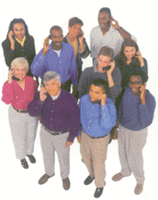
3. It is certainly not true that mobile phones have the All Clear. Scandanavian studies note an increase in acoustic neuromas, especially on the side of the head where the phone is most used. New studies are underway to look into fears that long-term usage is causal. Mobile phone base stations, masts and even WiFi have all been covered by research in icon Cancer Watch, and there are reports under Prevention on this web site.
4. There are repeated reports (especially from Japan) into viral links in particular Simian Monkey Virus, SV-40 after Salk Polio vaccines used the Rhesus Monkey kidneys to grow the vaccine and became contaminated. By 1963 the monkey had been replaced by the virus free Green Monkey unfortunately 93 Americans had taken Salk vaccine. The virus causes brain tumours in animals. Research reported in Cancer Res. 2003; 63; 7606 linked the virus to malignant mesothelioma, brain tumours and non-Hodgkins lymphoma. The Japanese researchers claim the virus has passed well beyond the original Salk treated population.
5. There is some concern over EMFs in the home especially those from bedroom TVs, computers, bedside electricity points etc.
6. Smoking increases the risks of all cancers, as does a poor diet.
7. Drs Goldman and Klatz in the USA refer to antibiotics and anti-inflammatory drugs as two of the top six brain poisons. Antibiotics reduce the levels of folic acid and other essential B vitamins in the body by killing the beneficial bacteria that help make them in the intestine. These vitamins are essential to good DNA replication. Antibiotics and certain drugs may well be given during your treatment; these will reduce beneficial bacteria levels further.
 some brain tumours may well be oestrogen-driven
some brain tumours may well be oestrogen-driven
8. There is evidence that, in common with other cancers, brain tumours may be oestrogen-driven and even arise from undifferentiated stem cells in the brain, under the influence of oestrogen. Certainly, there is evidence that after treatment some ’stem cells’ may survive, and grow back into a new tumour. Certainly melatonin can be useful in fighting a brain tumor.
9. Scientists from 19 countries, at the International Agency for Research on Cancer in Lyon (IARC) have concluded that high nitrite levels (especially in conjunction with low vitamin C levels) are linked to carcinogenicity. Links with stomach cancer, oesophageal cancer and brain tumours were noted. The working group were especially concerned with the run-off of fertilisers into surface and well water. Nitrites and nitrates may have a direct cancer effect or promote the by-products of cyanobacteria in the soil and water. But then this dovetails with US research that showed children who ate ten or more hot dogs a week had much higher incidences of brain tumours. Why? Again dried meats and preserved meats have high nitrite levels.
10. Lead in the workplace has been linked to brain tumours. Researchers from The University of Rochester School of Medicine, New Jersey using a sample of 317,963 people have concluded that regular lead exposure increases brain tumour deaths by 50 per cent.(Int. J. Cancer 2006; 119; 1136-44). There are many sources of lead in the home, not confined to old pipes and old paint, but still there is residue near main roads and petrol stations.
Brain Tumour Orthodox Treatment
1.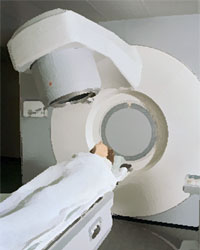 You will be sent for one or more scans to determine the location and size of your tumour.
You will be sent for one or more scans to determine the location and size of your tumour.
* A CT scan uses multi-dimensional X-Rays built up via a computer into a 3 D model to pinpoint the problem. Cancer Watch has covered that these themselves are not without problems. (NB: Too many CT scans should be avoided where possible. Research from Columbia University (icon Vol 3 Issue 4) calculated that the radiation produced from an annual CT scan risks a 1 in 50 chance of death. The risks of a full body scan are reasonably well quantified says Dr David Brenner). Frankly you have little choice if you want your oncologist to know what is going on inside your head.
* An MRI scan delivers much the same 3 D picture as the CT scan but uses magnetic resonance. So no necklaces or chains and tell them about any metal in your body!!
2. From this point debulking surgery is used where the tumour is accessible and removal does not endanger localised nerves or important bodily functions like sight. You should discuss the exact location of the tumour with the surgeon, any adjacent nerves, and the risks associated with the surgery.
3. Surgery rarely removes the whole tumour and your oncologist will probably want to use radiotherapy as well. Catherine wrote an article about her experiences of radiotherapy from having the mask made to the effects of the treatment. The treatment is not without side effects and you can only really have one course of radiotherapy, usually five days per week for 6 weeks. Overall - Make sure you go to every treatment session. You should continue to take your vitamins and supplements see our article on how to maximise the effectiveness of your radiotherapy programme.
You may be offered ’The Gamma Knife’ treatment. It is a form of stereotactic radio surgery (SRS). It is not really surgery as there is no ’incision’ instead about 200 small tightly targeted beams of radiotherapy are focused on one location. Because each beam comes from a different angle, the argument is that no beam causes damage into (before) or out (after) of the tumour cells. However, maximum damage occurs in the centre of the cancer. Another form of this is the Cyberknife which actually moves around the location firing from different angles.
In Catherine’s case, the radiotherapy gave her serious damage and caused severe short-term memory loss. Personally, if anybody suggested irradiating my brain I’d go for ...
In 2006 MD Anderson ’invented’ Proton Beam Therapy, particularly for use with children. It tackles only the tumour and is far less damaging to tissue before, after and around the tumour. Given a choice, it is much safer to have proton beam therapy.
Go to: Proton Beam Therapy
4. Associated Drugs: You will almost certainly be given corticosteroids before and after any surgery to reduce the swelling inside your brain. You will also be given anti-fitting drugs (anticonvulsant or anti-epileptic drugs). The brain does not enjoy being attacked with a scalpel and sudden fits can occur for a couple of years after surgery without these drugs. (You are not allowed to drive a car, for example). In Catherine’s case dosage was changed quite regularly according to her condition.
5. Chemotherapy: For information on your Cancer Drugs and chemotherapy click here.
Temozolomide, PCV, Camustine on a gliadel wafer, Avastin. All of these are used in brain cancer. But make sure you know whether your cancer is methylating or not, before you have temozolomide as it does not work in 80% of cases (although Berberine, metformin and chlomipramine can all increase its effectiveness). Your oncologist may decide to use chemotherapy immediately or he may wait to see how fast the tumour returns. In January 2004 the Lancet, that bastion of the orthodox medical profession, ran an article which said that the drugs don’t cure brain tumours. And they are right, since there is no long term evidence of "cure" for any of them. Of course, this is not to say there are not some benefits, especially in the short-term.
However, there is a study on real life comparisons in America of Temozolomide use, both Temozolomide plus radiation, Radiation only and nothing as treatments. This concluded that mean survival across 2,272 patients was 456 days, with the lowest being the ’TMZ only’ group at 331 days to the highest at 529 being the group who had received neither!
* When Catherine was treated after her tumour returned she was given a three drug combination PCV including Procarbazine, Carmustine and Vincristine.
In 1994 clinical trials amongst 24 people this produced the following data:
-
18/24 patients responded to the treatment (75%)
-
9/24 patients responded completely (38%)
-
5/24 patients responded partially (21%)
-
4/24 patients had stable disease (16%)
In a 1996 clinical study with 32 patients:
-
29/32 patients responded to the treatment (91%)
-
9/29 patients experienced haematological toxicity (31%)
-
10/29 patients had delayed treatments due to treatment induced toxicities (35%)
-
10/29 patients had complete responses (35%)
-
19/29 patients had partial responses (64%)
The median time to progression (MTP) for all patients was 15.4 months.
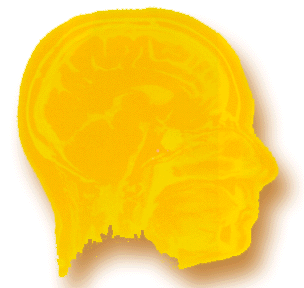
The Cedars-Sinai Medical Center producing this overview on PCV stressed it was important to incorporate a strict diet regime (because some foods interact with the drugs) and that the health risks are not insignificant.
Not all the clinical trials did this well. In Catherine’s case PCV destroyed her white cells so badly that she could not have a second round of this therapy. You must make your own mind up.
Carmustine is now being used in the USA on dissolving wafers (Gliadel), which can be put on the tumour during surgery. Carmustine, itself has mixed reviews for brain tumour treatment although it does cross the blood/brain barrier. Here we quote from the US NCI Chemotherapy site:
Carmustine has been utilized as a single treatment chemotherapy for many years on primary brain tumours, however, the historical statistics do not always appear to support the effectiveness of BCNU as a single agent on brain tumours. One study of 467 patients with malignant glioma concluded:
The combination of carmustine plus radiotherapy produced a modest benefit in long-term (18-month) survival as compared with radiotherapy alone, although the difference between survival curves was not significant. This study suggests that it is best to use radiotherapy in the post-surgical treatment of malignant glioma and to continue the search for an effective chemotherapeutic regimen to use in addition to radiotherapy.
The search for an effective brain cancer treatment
Other drugs show promise: Tarceva; Gleevac. Readers should read both
* the Latest Brain Tumour Treatments - which features an interview with Dr Henry Friedman of Dukes in Carolina
* the Coming Brain Tumour Treatments - which features amn interview with Dr Mike Brada of the Royal Marsden
Temozolomide: A lot of fuss is being made in the UK since NICE first refused to pass it for general use in the NHS they have now. Talk of costing lives and of the gold standard for brain tumours was rife.
Let’s look at the research. At the American Society of Clinical Oncology (ASCO) annual meeting, New Orleans, June 7, 2004 and published in the March 10, 2005, issue of the New England Journal of Medicine, with 573 glioblastoma multiforme patients (one group having just radiotherapy, the other radiotherapy plus temzolomide):
-
After two years, 26 per cent of patients taking temozolomide were alive compared to just 10 percent of those who had radiation only.
-
The median survival in the radiation-plus-temozolomide group was 14.6 months compared to 12.1 months in the radiation-alone group.
-
Progression-free survival - the amount of time before the tumour began to grow again - was 7.2 months in the temozolomide group and 5 months in the other group.
So, NICE may have based its views on the expense (relative to other drugs that might have more significant benefits) of a 2.5 month increased survival over radiotherapy alone.
In the New England Journal of Medicine March 10th 2005, researchers reported that most glioblastoma patients in a 2004 study who survived longer on temozolomide had tumours in which a particular gene was turned off. Indeed, the researchers reported that they could actually identify which patients would likely benefit most from the temozolomide treatment depending on whether a certain gene within the tumour was turned off or on. This test does not seem to be commonplace in the UK.
If that’s the Brain Tumour Gold Standard what else can you do?
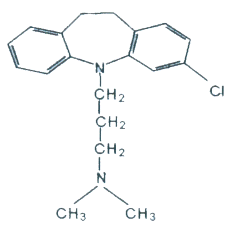
-
Chlomipramine: There is some research activity centred on an old ’tricyclic’ drug called
Chlomipramine, where it seems it may affect the mitochondria of brain tumour cells. You can read about the work taking place at the moment by clicking that link. Recent reasearch suggests that it can improve the effectiveness of some other brain tumour drugs. See Cancer Watch.
-
Photo Dynamic Therapy is used in several top cancer centres the USA, but largely at the time of surgery. A photosensitive agent applied directly to the tumour has light of a certain frequency shone directly on it whilst in the tumour. This produces a free radical oxygen molecule which attacks the cancer cell. This therapy has been limited by the need to have the tumour exposed to the light source. However, now newer algae/chlorophyll agents are reducing this direct light need and the need to have PDT at the same time as surgery. We have in-depth articles you really should read on
PDT.
One research study may be of interest to glioma patients. In research involving 322 patients (Stummer et al Lancet Oncology 7; 392-401), a group of patients was treated with 5-aminolevulinic acid, a non-fluorescent drug but one which leads to the accumulation of fluorescent porphyrins in malignant cells. The group had surgery (resection) and the tumour was removed completely in 65 per cent of cases (control group 36 per cent). 6-month progression free survival was 41 per cent up from 21.1)
-
The replacement of Missing Peptides: Anti-neoplastons are missing peptides in people with cancer, according to US expert Dr Burzynski. His work is being monitored by the FDA in America and he specialises in Brain Tumours. Hugely controversial.
-
Heat therapy or hyperthermia: We have several articles on the use of
Hypothermia (and
Ultrasound) in the treatment of cancer. A version of this is being developed at the Radcliffe in Oxford for use with brain tumours.
-
ECutting your oestrogen levels naturally: Overweight people make and store more oestrogen, some chemicals in some toiletries, perfumes make-up, and household cleaners once inside the body can mimic the action of oestrogen. (Xeno-oestrogens). They have been found to be cumulative. Hormone pills (eg. contraceptive pill, HRT) may increase levels, animal fats may hold these hormones, and EMFs and disturbed sleeping patterns may reduce melatonin levels which will in turn increase oestrogen in the body. There are ways to control excess oestrogen in the body. (Our book Oestrogen the killer in our midst tells you more and gives simple action steps).
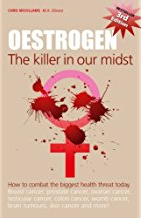

The CANCERactive Difference: Intelligent Information. Independent Voice.
IMPORTANT INFORMATION
|
* Cancer (and its related illnesses) are very serious and very individual diseases. Readers must always consult directly with experts and specialists in the appropriate medical field before taking, or refraining from taking, any specific action.
This web site is intended to provide research-based information on cancer and its possible causes and therapies, so that you can make more informed decisions in consultation with those experts. Although our information comes from expert sources, and is most usually provided by Professors, scientists and Doctors, our easy-to-understand, jargon-free approach necessitates that journalists, not doctors, write the copy. For this reason, whilst the authors, management and staff of CANCERactive, icon, and Health Issues have made every effort to ensure its accuracy, we assume no responsibility for any error, any omission or any consequences of an error or omission. Readers must consult directly with their personal specialists and advisors, and we cannot be held responsible for any action, or inaction, taken by readers as a result of information contained on this web site, or in any of our publications. Any action taken or refrained from by a reader is taken entirely at the readers own instigation and, thus, own risk.
|